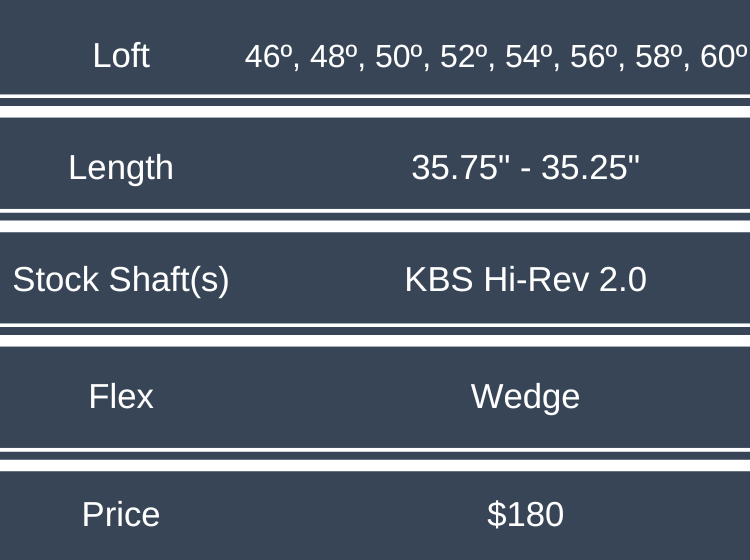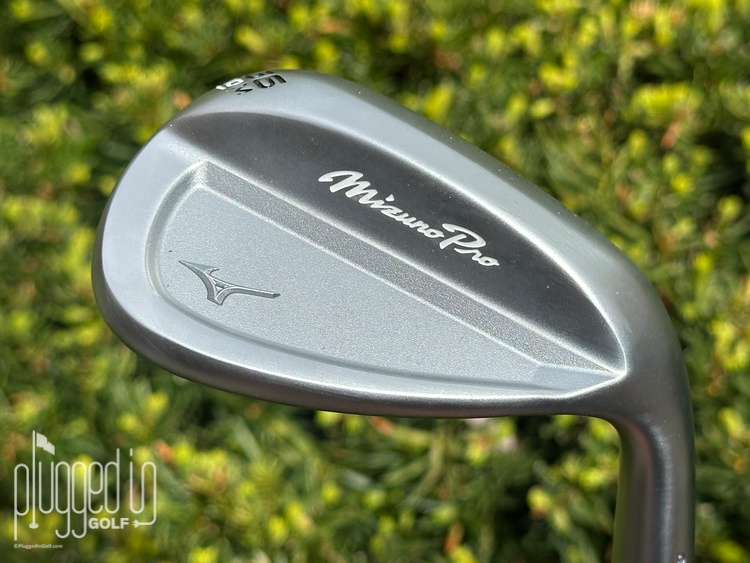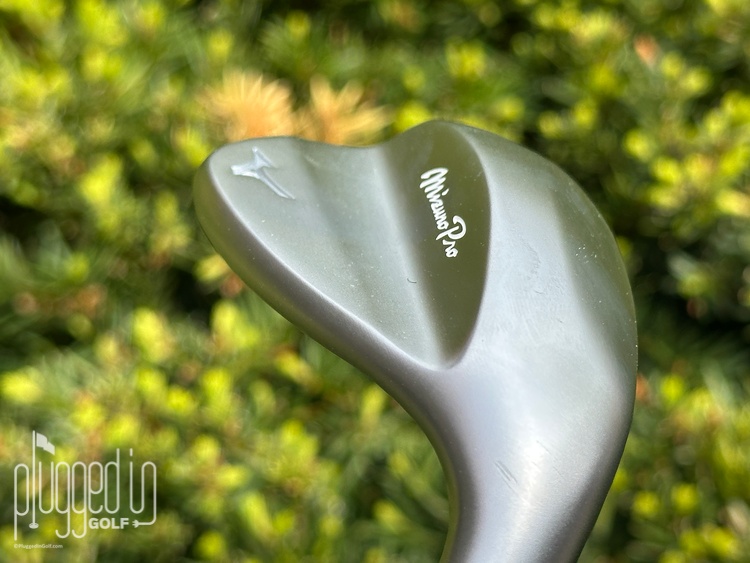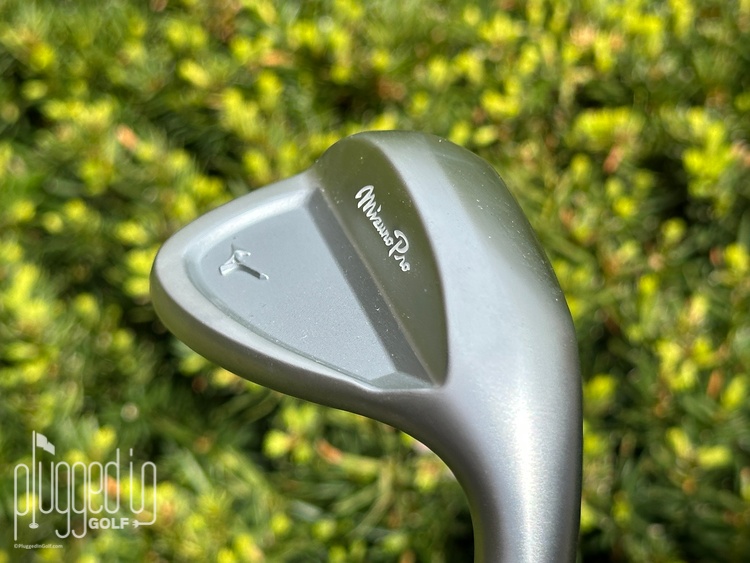50 Words or Less
The Mizuno Pro T-1 wedge is a compact, Tour-style wedge with average spin and good feel. Six sole options.
The Mizuno Pro T-3 wedge is slightly larger with a small cavity back. Modestly more forgiving. Three sole options.
Introduction
While Mizuno has been known to get experimental with their wedges [as in the ES21 HERE], they’ve always kept one line of traditional, Tour-style wedges. The new Mizuno Pro T-1 and T-3 wedges aim to fill that spot for 2025. I tested both to see how they stack up to the best scoring clubs from other OEMs.
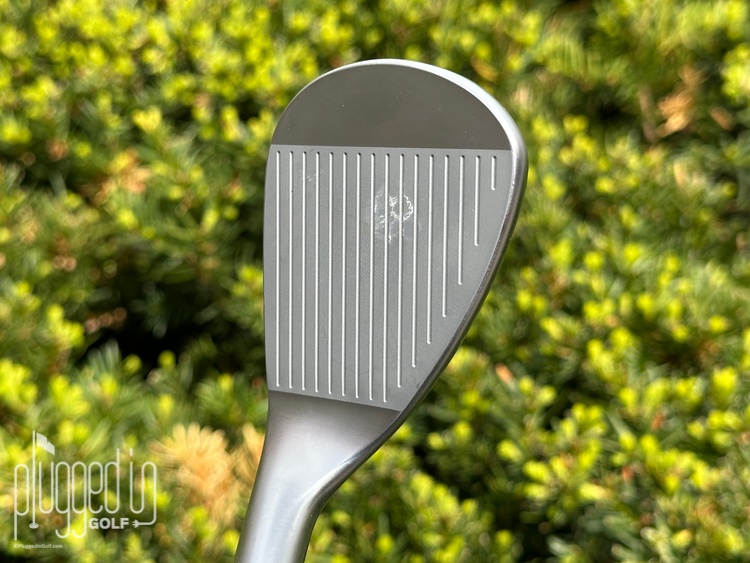
Looks
Setting the Mizuno Pro T-1 wedge (above) behind the ball, it immediately earns its “Pro” moniker. This is a compact wedge that frame the ball without much excess. Its shape is a traditional teardrop, and the leading edge is fairly straight with slight curves at the heel and toe.
In the bag, the Pro T-1 is very clean. The focal point is the script “Mizuno Pro” across the top of the wedge, leaving the unfilled running bird to fly below the radar (pun intended). One interesting, subtle detail is that the top of the back is thicker, and it thins out in the middle. The Mizuno Pro T-1 wedge is offered in three finishes: Black Ion, Blue Ion, and Soft White Satin (shown here).
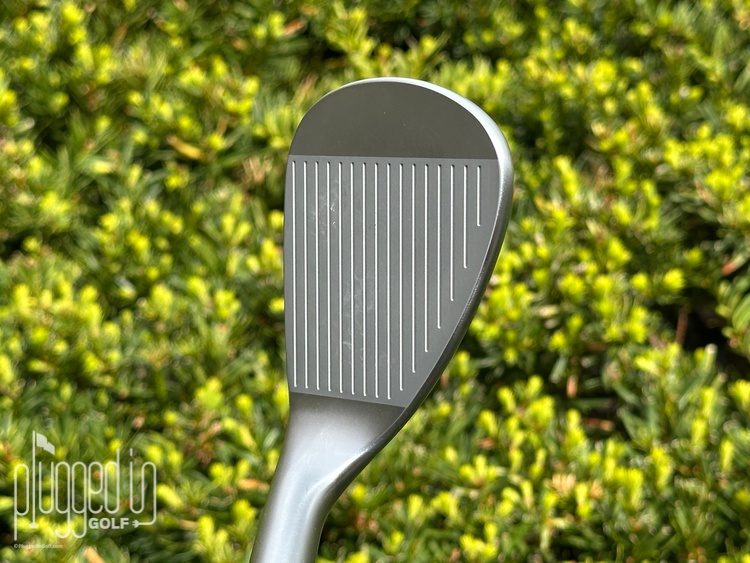
The Mizuno Pro T-3 wedge is very similar to the T-1. It is slightly longer heel to toe, but this is still a compact wedge. The shape of the leading edge is also similar – straight across the hitting area with a slight curve at the edges.
In the bag is where you’ll notice the obvious difference between the Pro T-1 and the Pro T-3 wedges. While the branding is the same, the Mizuno Pro T-3 has a slight cavity back. The Pro T-3 is available in only the Soft White Satin finish shown here.
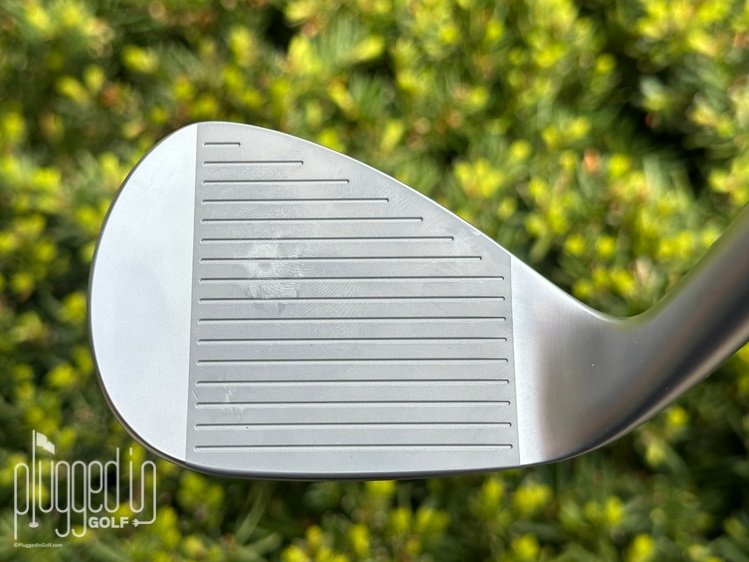
Sound & Feel
The Mizuno Pro T-1 (above) and T-3 wedges have the same construction as the new Pro S-3 irons [review HERE]. They’re “Grain Flow Forged” from 1025 Pure Select Mild Carbon Steel with a thin copper underlay beneath the finish. The result is a feel very similar to those irons.
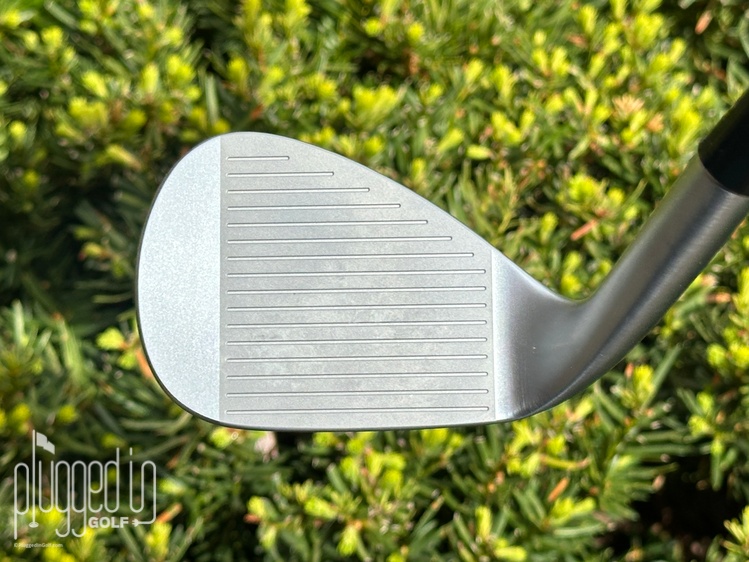
On center, both wedges feel medium-soft. They’re not buttery soft, but they’re not crisp or responsive either. This pairs well with the impact sound – a “thud” that’s below average in volume. Mishits do firm up noticeably, sending a clear signal that you missed the mark. Feedback through the hands is moderate in both the T-1 and T-3 (above). You need to pay careful attention if you want to know precisely where the ball met the face.
Performance
The most obvious question regarding the Mizuno Pro T-1 and T-3 wedges is how much difference there is between the two models. The short answer is, “Not much.” Mizuno gave the Pro T-3 a fairly shallow cavity that will offer a small, measurable improvement in performance on mishits. I want to highlight the difference between “measurable” and “noticeable”. On a launch monitor, I could see that the ball speed was slightly more consistent with the Pro T-3. Without the launch monitor, I think the difference would be very hard to discern.
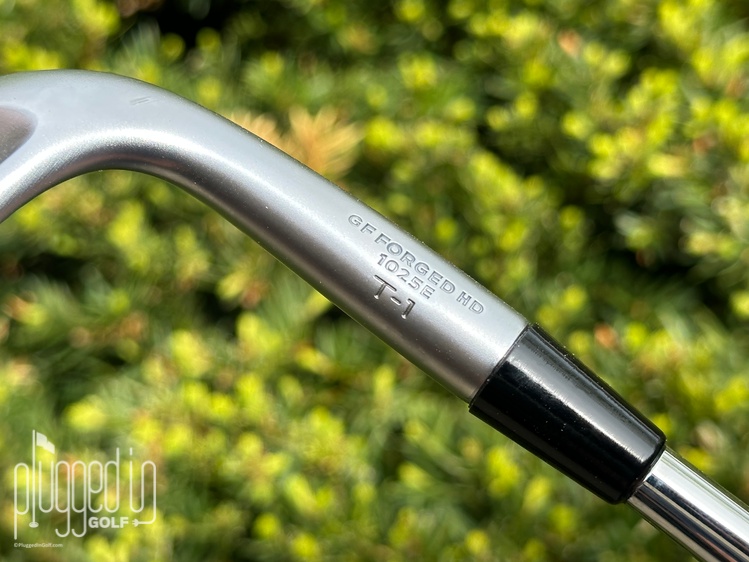
Turning to launch and spin, both the Mizuno Pro T-1 and Pro T-3 are average. The Pro T-3 launches slightly higher, but, again, I don’t know that most players would see this difference with the naked eye. It deals with thin strikes a little better, but it’s not going to change your line drives into pop ups. Mizuno’s Quad Cut + Grooves do a good job of keeping the spin consistent in wet and dry conditions.
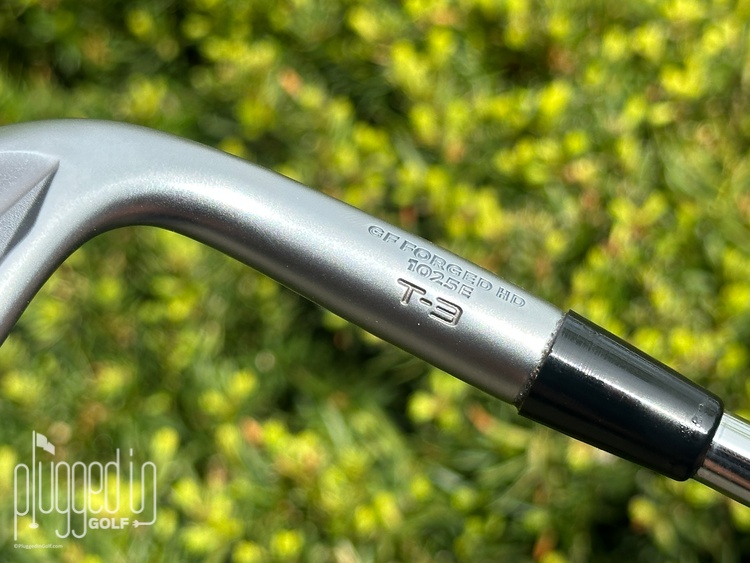
One area where these compact wedges excel is in shot control. With both models, I felt like I could easily flight the ball up or down and make it fall to the left or right. Mizuno promotes “Loft/COG Flow Design” which is nebulously described as promoting more control and versatility. My suspicion is that the COG is lower in the stronger lofted wedges and higher in the high lofted wedges, but the difference is subtle.
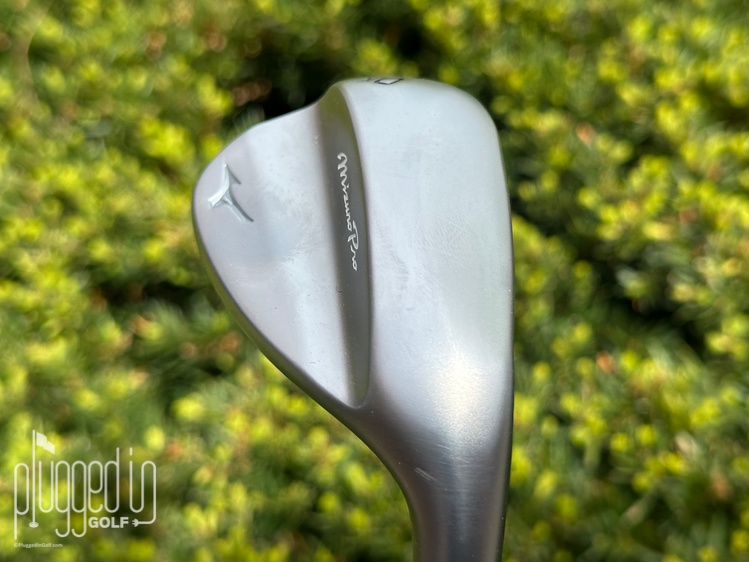
Turning to the sole, the Mizuno Pro T-1 wedge has six sole grinds available: S, M, C, X, P, and V. The S Grind has the least relief, and the M Grind has moderate relief. All of the other grinds feature more aggressive relief with varying amounts of bounce. The X Grind has the lowest bounce with the V and P Grinds having high bounce.
I got to test almost all of the different grinds. To me, the difference between them is subtle. Overall, they favor the better player, offering more versatility than anti-dig insurance. If you’re a very steep swinger, I don’t think these are the best choice for you – opt for something like the JP Camber wedge [review HERE]
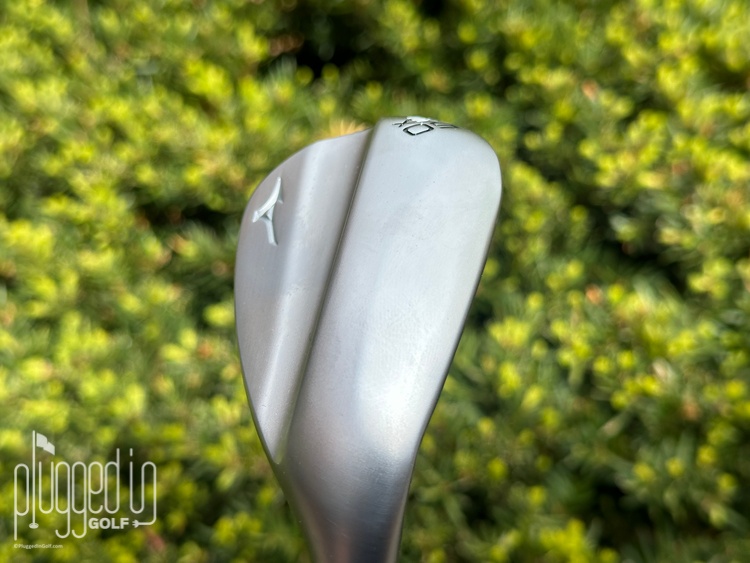
The Mizuno Pro T-1 wedge offers only the S Grind in the lower lofts – 46, 48, 50, and 52 degrees. Moving to the sand and lob wedges, there are more grinds available in the Pro T-1. At 54 degrees, the Pro T-1 has the M, P, and S Grinds. At 56 degrees, the Pro T-1 offers the V, M, and P Grinds. You can get the C and V Grinds at 58 and 60 degrees. Additionally, the M Grind is offered at 58 degrees and the X Grind is available at 60 degrees.
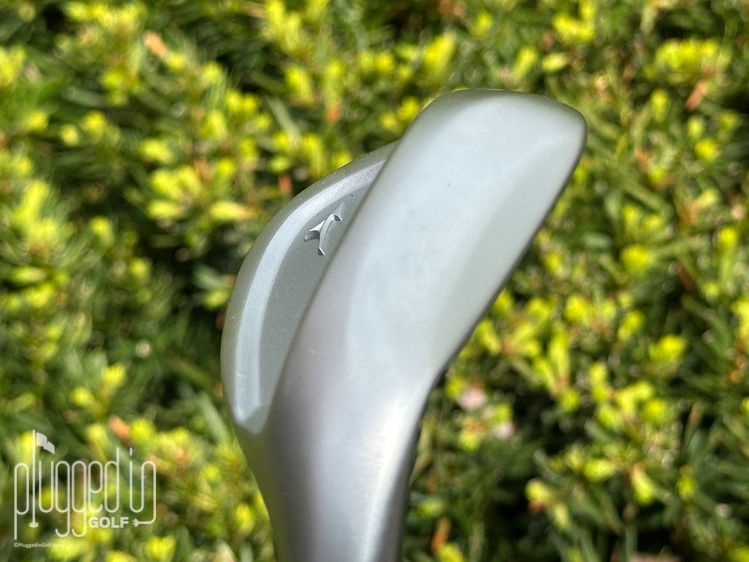
In the Mizuno Pro T-3 wedge, there are just three sole grinds: C, M, and S. This simplified menu is deemed more appropriate for players who also want some forgiveness in their wedges. The Mizuno Pro T-3 wedge offers the S Grind exclusively at 46, 48, 50, and 52 degrees. You can get the M and S Grinds at 54 degrees and the C and M Grinds at 56 degrees. At 58 degrees, Mizuno offers the C and M Grinds and only the C Grind is available at 60 degrees.
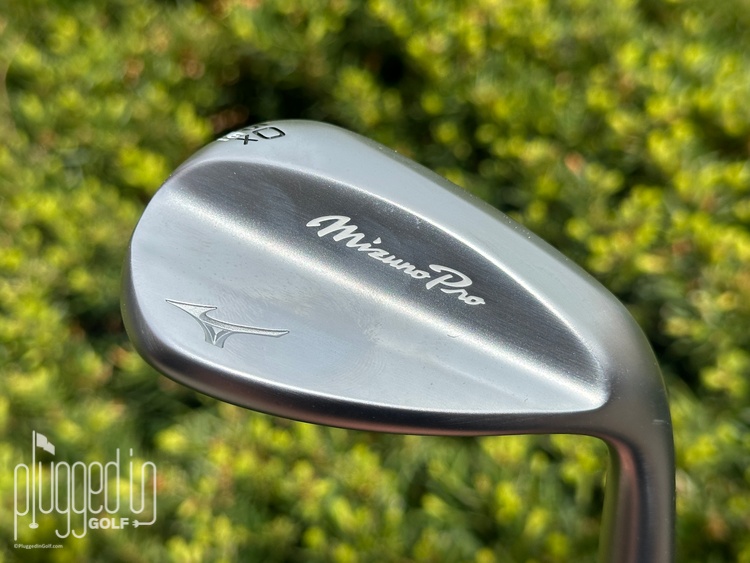
Conclusion
While the Mizuno Pro T-1 wedge doesn’t offer anything new compared to the T24 wedge [review HERE], it’s a clean, classic Tour-style wedge that will have plenty of appeal for skilled players. The Mizuno Pro T-3 wedge offers very similar looks and feel to players who would like just a touch of help of their mishits.
Support Plugged In Golf, Shop HERE
Mizuno Pro T-1 & Pro T-3 Wedge Price & Specs
